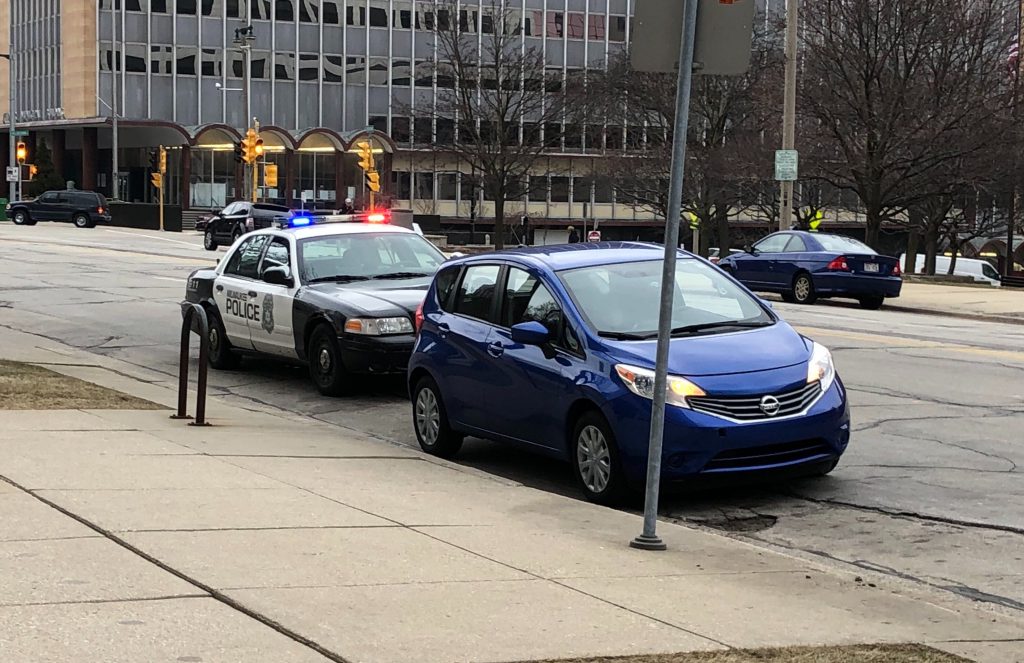MPD Survey Shows Police Perception Divided Along Racial, Economic Lines
Researcher says key takeaway is for MPD officers to exercise compassion in any interaction.
A random survey of 1,373 Milwaukee residents reveals stark lines in perceptions of the Milwaukee Police Department and safety.
Dividing lines form around race, the recency of an interaction with police and other socioeconomic circumstances.
Led by the Police & Fire Commission, the study is the third biennial study of public perceptions of policing. Data was collected by random-digit-dialing of landlines and cell phones from August 14th, 2019 through January 17th, 2020 and balanced to ensure respondents came from all areas of the city and accurately reflected the city’s racial and ethnic makeup. The survey was conducted in both English and Spanish.
But other findings have changed in statistically significant ways.
Seventy-nine percent of survey respondents said they had some level of satisfaction with MPD, that’s up from 72 percent in 2017.
“While gaps in overall satisfaction with the MPD across racial, gender, socioeconomic, and experiential lines persisted in 2019, overall satisfaction increased significantly among some resident subgroups with historically higher rates of dissatisfaction, including those who recently contacted the police for assistance, male residents, Black residents, and those without a 4-year college degree,” wrote Cera in his report. “Notably, none of the subgroups measured expressed lower levels of satisfaction in 2019 when compared to 2017.”
Cera said Neighborhood Analytics used machine learning to analyze respondents’ perceptions of the police following each individual interaction. “Every negative encounter has the ability to undermine prior compassionate encounters,” said Cera, noting that the survey found individuals don’t have a predisposition to dislike the police, but instead develop the feeling through interactions. It also found that individuals do not hold past negative interactions against other officers, viewing officers as individuals.
The multiple surveys identified that non-white respondents increasingly report being stopped by police more frequently than white respondents. Cera said that Black respondents reported being stopped twice as frequently as white residents and once stopped report being searched twice as often.
Racial splits in resident opinion disappear when similar experiences are had by respondents. “Once you control for police conduct, you can no longer predict a resident’s response based on race,” said Cera.
“I think there’s a lot of insights from the data that can be helpful in terms of policy making,” said Alderman Michael Murphy in encouraging MPD officials to read the report. He said assistant chief Jeffrey Norman, a finalist to be the next chief, had requested the report.
“I can only reiterate the importance of compassion shown by police,” said Cera. “I hope that this data can be a signpost to officers that they’re wanted by huge swaths of the community and hopefully that sets the stage for more compassionate interactions.”
Alderwoman Milele A. Coggs asked if MPD or the FPC had ever actually used the survey to make policy changes. No one immediately responded, but Murphy encouraged them to put it in writing. “That is a question I would like answered,” said Coggs.
“I think the information is great, but for those of us that work with these issues regularly it is not surprising,” said Coggs.
What will 2021’s survey hold? Murphy cautioned that the current budget proposal doesn’t include any funding to conduct the survey. The 2019 survey, delayed by the pandemic, cost $50,000.
Murphy sponsored the survey’s funding in 2014. “We spend now about $300 million on a police department and we don’t ask our residents their feelings on it in any scientific, systematic way,” he said. “I think that’s remarkable.”
The alderman said former chief Edward A. Flynn used it to change practices.
Other Findings
Perceptions of safety have increased in statistically significant ways according to the report. Ninety-one percent of residents feel safe during the day in their neighborhood, 74% at night and 54% in Milwaukee as a whole.
When isolating by income, those in households making less than $40,000 have a 20% dissatisfaction rate with MPD, while those making more than $40,000 have a 24% dissatisfaction rate.
The report’s data collection was completed before a nationwide focus on policing emerged following the killing of George Floyd by a Minneapolis police officer.
The city’s problems with reckless driving appear in the data, even as statistics with violent crime improved from 2017 to 2019. “Satisfaction with efforts to enforce traffic laws decreased significantly over this same period, commensurate with a significant increase in the proportion of residents who received a ticket during their most recent police stop (27%, compared to 18% in 2017),” wrote Neighborhood Analytics in its major findings.
On the four-point scale respondents were given, MPD’s efforts to enforce traffic laws received the lowest score (1.56). It was once one of the highest-rated surveyed aspects.
A full copy of the report can be found on Urban Milwaukee.
Legislation Link - Urban Milwaukee members see direct links to legislation mentioned in this article. Join today
If you think stories like this are important, become a member of Urban Milwaukee and help support real, independent journalism. Plus you get some cool added benefits.
Political Contributions Tracker
Displaying political contributions between people mentioned in this story. Learn more.
City Hall
-
Council Blocked In Fight To Oversee Top City Officials
 Dec 16th, 2025 by Jeramey Jannene
Dec 16th, 2025 by Jeramey Jannene
-
Latest Effort to Adopt New Milwaukee Flag Going Nowhere
 Dec 3rd, 2025 by Jeramey Jannene
Dec 3rd, 2025 by Jeramey Jannene
-
After Deadly May Fire, Milwaukee Adds New Safety Requirements
 Dec 2nd, 2025 by Jeramey Jannene
Dec 2nd, 2025 by Jeramey Jannene





















